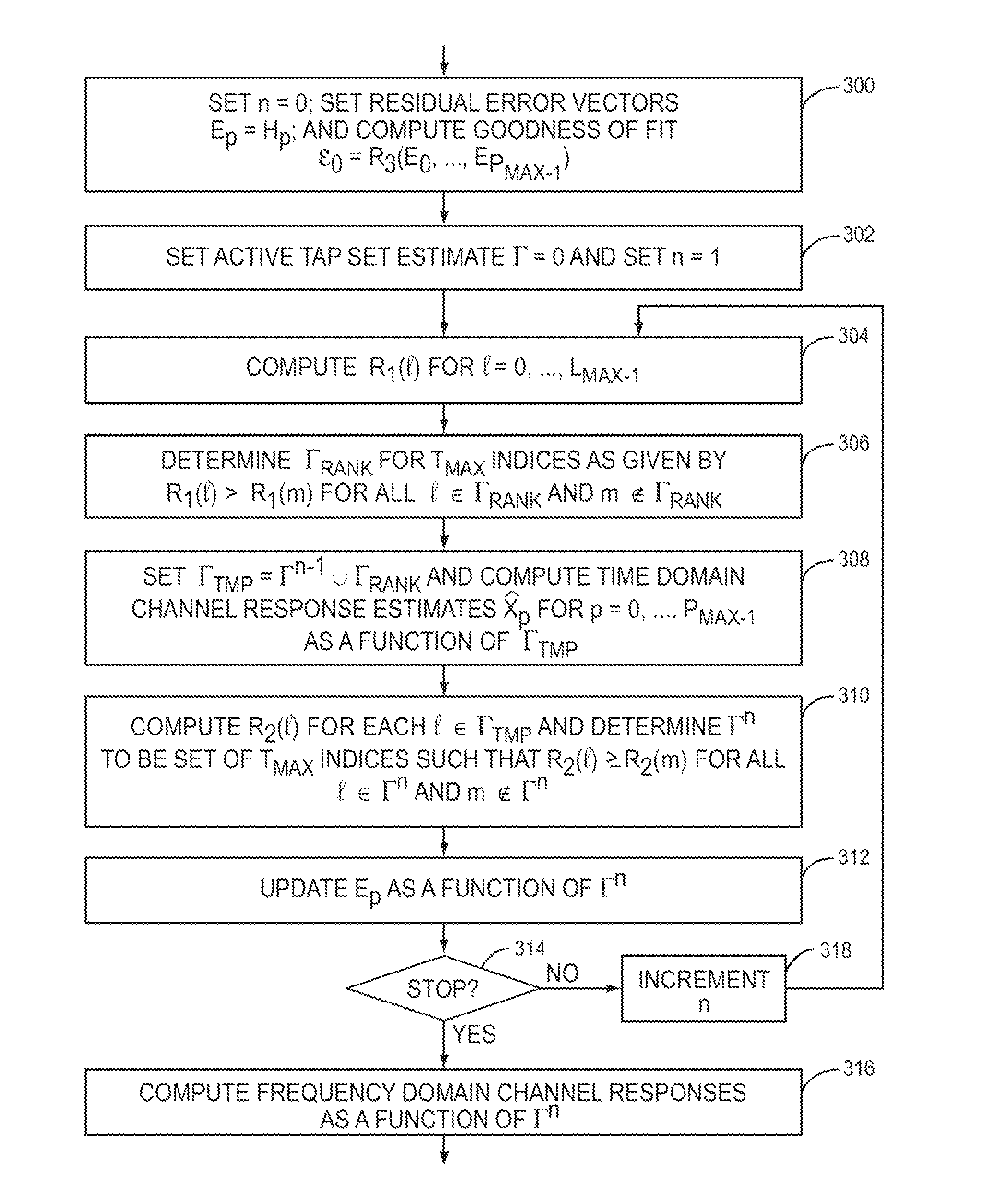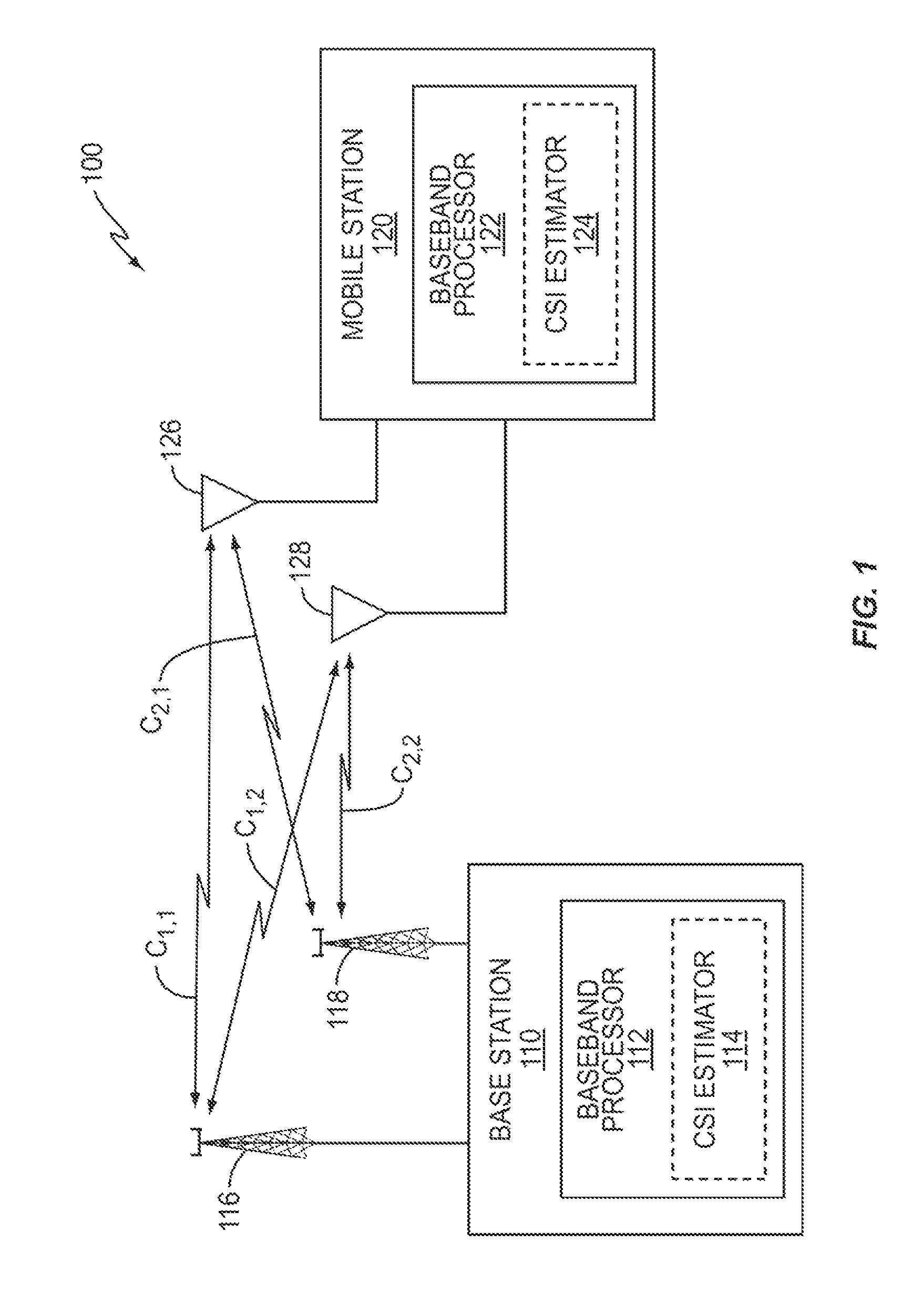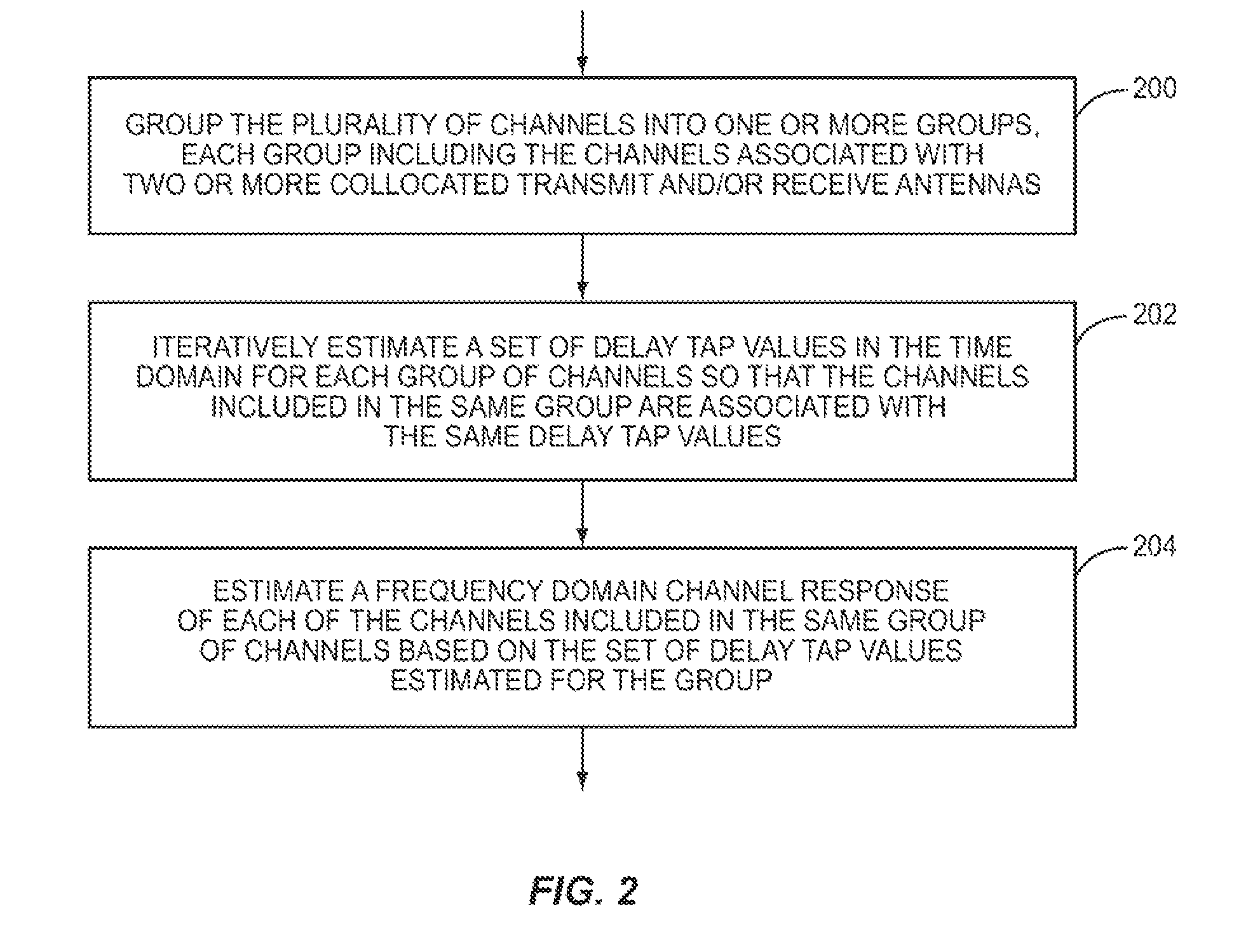MIMO channel state information estimation with coupled iterative two-stage ranking
a technology of state information estimation and mimo channel, applied in pulse technique, site diversity, baseband system details, etc., can solve the problems of high computational complexity and computational complexity of csi estimation techniques mentioned above, and achieve the reduction of the number of required reference symbols or feedback samples, improve estimation accuracy, and reduce the complexity of algorithms
- Summary
- Abstract
- Description
- Claims
- Application Information
AI Technical Summary
Benefits of technology
Problems solved by technology
Method used
Image
Examples
Embodiment Construction
[0015]FIG. 1 illustrates an embodiment of a wireless communication network 100 including a base station 110 serving a mobile station 120 such as a UE. The base station 110 transmits communication signals in the downlink over radio frequency channels to the mobile station 120. The mobile station 120 can transmit signals in the uplink to the base station 110. In both cases, the received signal may be characterized as the transmitted signal, altered by channel effects, plus noise and interference. At least one of the base station 110 and / or the mobile station 120 has more than one antenna. In the downlink direction, the mobile station 120 is the wireless receiver and the base station 110 is the wireless transmitter. The opposite holds true in the uplink direction, i.e. the base station 110 is the receiver and the mobile station 120 is the transmitter. Thus, the term ‘receiver’ as used herein can mean either the base station 110 or the mobile station 120 depending on the communication l...
PUM
 Login to View More
Login to View More Abstract
Description
Claims
Application Information
 Login to View More
Login to View More - R&D
- Intellectual Property
- Life Sciences
- Materials
- Tech Scout
- Unparalleled Data Quality
- Higher Quality Content
- 60% Fewer Hallucinations
Browse by: Latest US Patents, China's latest patents, Technical Efficacy Thesaurus, Application Domain, Technology Topic, Popular Technical Reports.
© 2025 PatSnap. All rights reserved.Legal|Privacy policy|Modern Slavery Act Transparency Statement|Sitemap|About US| Contact US: help@patsnap.com



